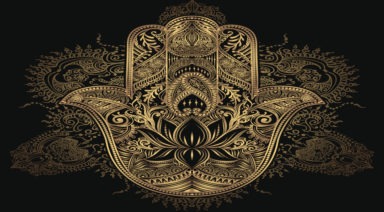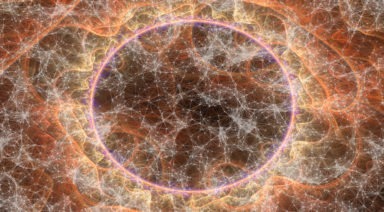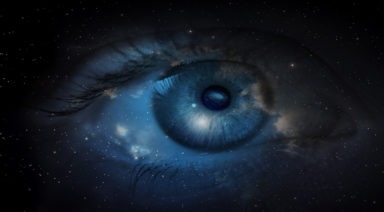What is Astral Projection?

Call it what you like — dream body, astral body, energy body, Buddhist light body, Taoist diamond body, Egyptian ka, Tantric subtle body, Hindu body of bliss — and in Christianity, the experience of different “heavens,” i.e. “I know a man who was caught up to the third heaven. Whether it was in our out of body, I do not know,” from Corinthians 12:1-4. The subtle body is a universal human experience, and apparently part of our standard human design like toenails and kidneys. It is this subtle body that projects astrally and is active during unconscious and lucid dreaming; astral projection and dreaming often go hand-in-hand as “out-of-body” experiences, or OBEs.
The subtle body, when cultivated, can survive the physical body as a matrix for consciousness, and astral projection and lucid dreaming are part of spiritual training paths for subtle body cultivation. Neophytes confuse the subtle body with the soul or spirit, two additional aspects of multi-dimensional humans.
Out of Body Experiences and Astral Projection
The OBE can be intentional or involuntary, as with near-death events when people report finding themselves floating near the ceiling of their hospital rooms, perhaps observing medical staff attempting to revive them. Trauma, illness, or water and food deprivation, as with Native American vision quests, can trigger OBEs. Lucid dream states are opportunities for intentional OBEs. For the purposes of this article, OBEs may be spontaneous, and astral projection a conscious choice, though some would argue otherwise.
Essentially, the OBE begins with an experience of leaving the body and consciously observing it from a detached perspective. With practice and lucidity, awareness can be directed to locations or activities like flight. Yes, flight. If you’ve had flying dreams — literal flying, no 747 required — or being in the sky, you’ve had OBEs. Some say that we have regular OBEs during sleep, often hovering a few inches over our physical bodies.
Neuroscientists are puzzled — while the experience is no longer dismissed out of hand by medical professionals, science holds the view that OBEs involve neurological or brain dysfunction. After his own experience, Dr. Raymond Moody MD became interested in near death OBEs, and for decades interviewed hundreds of experiencers and collected data, defining common qualities of OBEs. Moody identified nine common elements of a near-death OBE — some experiencing all, some, only two or three.
Benefits of OBE
The tantrics mastered lucid OBE and dream states to overcome the fear of death by learning that we are not our “bodies.” They also discovered that the physical body can experience deep healing during OBEs — the mind can be tough on the body. And rather than losing time to practice meditation during sleep, yogis continued working through the night while the body rested.
Some athletes learn lucid dreaming to practice and visualize their game. By working in a dream or out-of-body, not only do they visualize, they have a “felt sense” of their practice, and can actually acquire the muscle memory for winning habits. Others benefit from the opportunity to explore past lives as well as accelerated personal development.

It is our energy, or subtle body that comes and goes from our physical form.
Astral Projection Methods
There are dozens of methods to learn conscious OBE and astral projection. There are two approaches — one is to keep the mind awake while the body falls asleep. It’s tricky — the mind wants to do what the body is doing. The goal is to take the body into deeper and deeper states of relaxation without drifting into unconsciousness. Yoga Nidra is one method. Once the body enters sleep state, practitioners simply “roll” out of their physical form.
Ancient yogis would tie two frogs together before sleep. Once tied, the frogs would continuously croak— a yogi would use the sound to anchor awareness as the body drifted into sleep, and either leave the body, or enter lucid dream states. If, during a dream, the yogi could no longer hear the frogs, he/she knew lucidity had been lost, and could “wake” again within the dream.
How to Astral Project/Travel
Monroe Institute Steps
Bob Monroe, founder of the leading research organization in the field of human consciousness called The Monroe Institute, penned a body of work titled “Journeys Out of the Body” in 1971 in which he provides a detailed outline for how to astrally project one’s self in seven steps:
- Step 1: Relax, both physically and mentally.
- Step 2: Enter a hypnagogic state, or half-sleep.
- Step 3: Deepen the state by prioritizing mental sensation over physical sensation.
- Step 4: Pay attention to the presence of vibration in your environment, which becomes apparent in a state of deep attention.
- Step 5: Incur the vibration in your physical body, and relax into its presence. The purpose of this is to gently jiggle the subtle body out of the physical body.
- Step 6: Focus your thoughts on leaving the limbs and the torso, and try to do so one at a time.
- Step 7: Known as “lifting out,” focus on effortlessly drifting out of your physical body.
The Astral Projection Rope Technique
From the work of Robert Bruce, founder of the Astral Dynamics movement, the rope technique is regarded one of the most accessible astral projection methods.
Step 1: Relax the physical body by visualizing each muscle.
Step 2: From your space of relaxation, enter a vibrational states; this should feel like an amplified version of a cell phone’s vibration mode pulsations coursing through the body.
Step 3: Imagine a rope hanging above you.
Step 4: Using the astral, or subtle, body, attempt to hold on to the rope with both hands. The physical body remains completely relaxed.
Step 5: Begin to climb the rope, hand over hand, all the while visualizing reaching the ceiling above you.
Step 6: Once you are aware of your full exit of the physical body, you are able to explore the astral plane.
Lucid Dreaming Techniques
Again, there are numerous lucid dreaming techniques. Some are designed to train the sleeper to wake within the dream, others offer methods of staying lucid while letting the body fall asleep.
A Nootropic Approach
Yes, it’s sounds weird. Nicotine has specific actions on brain chemistry — but no, it’s not about smoking. Considered a cognitive enhancer, nicotine is gaining fans among biochemical brain hackers.
Many, using nicotine patches to quit smoking, have inadvertently discovered what happens when they forget to remove a patch before sleep. Nicotine can induce hyper-realistic, but bizarre dreams that are so outrageous that many simply say to themselves, “Omg. This MUST be a dream. It’s too nuts to be anything else.” And voila — lucidity is attained. This is not an endorsement of the method, as many report nightmares when using nicotine.
Lucid Dreaming With Habit and Repetition
We attain lucidity the instant we recognize we’re in a dream state. Some people train by asking themselves, several times a day for days or weeks, “is this a dream?” The question eventually gets stuck in the place songs and jingles get stuck and are hard to unstick — things like “Afternoon Delight” by the Starlight Vocal Band. You know what we’re talking about.
The premise is that the question begins to habitually repeat by itself, and that eventually the mind will ask during a dream. When the dreamer answers, “why yes, this IS a dream!” they achieve lucidity.
The best opportunities for becoming lucid within a dream are during REM (rapid eye movement) sleep. This stage happens in the first two hours after we fall asleep and before we wake up. By waking and going back to sleep during the night we increase REM sleep time. Some use the sleep/wake method by setting interval alarms during the night, getting up for a few minutes, and going back to sleep with an intention of keeping the mind awake. If awakened during a dream, immediately go back to sleep — if possible, re-enter the dream with lucidity.
What Is Clairsentience and How to Develop It

Clairsentience is a psychic ability that allows one to receive information through physical or emotional sensations that arise without any apparent external cause. It is a form of intuitive perception that facilitates the recognition of energies, emotions, or subtle presences in the environment. In this article, we explore what clairsentience is, how it relates to channeling, and what practices help to develop it.
Table of Contents
- What Is Clairsentience?
- Clairsentience and Channeling
- Types of Clairsentience
- Exercises to Develop Clairsentience
- Can Everyone Develop Clairsentience?
- Benefits of Clairsentience in Spiritual Growth
- Differences Between Clairsentience and Other Psychic Abilities
What Is Clairsentience?
Clairsentience, also known as sensitive perception, is the ability to receive intuitive information through the body. Those who possess it may experience physical or emotional sensations without any obvious cause, but which are related to energies, people, or places. These perceptions do not originate from the traditional physical senses, but rather emerge as internal signals that the body translates into tangible sensations.
This ability can manifest in various ways: from a sudden chill to pressure in the chest or an unexpected emotion. Clairsentience is especially activated in energetically charged environments or in the presence of other people, allowing one to sense emotional states or subtle energies. Often, this perception is accompanied by instinctive knowledge that cannot be rationally explained, yet proves to be accurate and revealing.
Clairsentience and Channeling
Clairsentience plays a vital role in the channeling process. Unlike other psychic abilities that operate through images or sounds, clairsentience allows the channeler to receive information through bodily and emotional sensations. This channel of reception enables a deeper and more empathic connection with spiritual entities or energy fields, becoming a key tool for interpreting and transmitting messages from the subtle realm.
In the series Channeling: A Bridge to the Beyond, available on Gaia, the multiple ways in which channelers access non-physical information are explored. Clairsentience is presented as one of the most direct paths to feel the presence of guides, subtle entities, or shifts in the energy field. This documentary series features experts and renowned channelers who delve into the use of this ability as a bridge between realms and a tool for spiritual transformation.
Types of Clairsentience
Clairsentience does not manifest in the same way for everyone. There are different types, and each one allows the perception of specific information through the body or emotions. Understanding these variations helps to better comprehend how this ability works and to strengthen the connection with the energetic and spiritual realm.
Emotional Clairsentience
Emotional clairsentience manifests as the ability to feel the emotions of other people, even when they are not verbally expressed. Those who possess this ability can perceive sadness, joy, anxiety, or tension just by being near someone, making them channels of deep empathy.
Physical Clairsentience
In this case, the sensations are experienced directly in the body. It is possible to feel pain, pressure, or discomfort that do not belong to one’s own body but reflect energies from the environment or other people’s physical states. This form of perception can be especially useful in practices such as energy healing.
Spiritual Clairsentience
Spiritual clairsentience involves feeling the presence of guides, subtle entities, or shifts in the energy field. These sensations may manifest as chills, tingling, or a particular vibration in the body. It is a common way of perceiving when a spiritual energy becomes present, even without associated images or sounds.
Exercises to Develop Clairsentience
Developing clairsentience is a progressive process based on regular practice and conscious attention to the body and the energetic environment. Through simple exercises, it is possible to train this ability and refine sensitive perception. The goal is not to force immediate results, but to allow the body to become a clear channel for intuitive reception.
One of the most effective exercises is energy reading of the environment. This exercise consists of sitting in silence in different spaces—a room, a garden, a public place—and observing the physical or emotional sensations that arise. It’s important to note whether these sensations change depending on the environment and whether specific areas of the body are activated. Over time, this exercise helps distinguish when a sensation corresponds to an external energy.
Another useful exercise is body scan meditation. Begin by closing your eyes and slowly directing your attention to each part of the body, from the feet to the head. Observe if any area produces pressure, vibration, heat, or cold without any apparent physical cause. This practice strengthens the body-perception connection and enhances sensitivity to the internal signals that activate clairsentience.

Can Everyone Develop Clairsentience?
Yes, anyone can develop clairsentience, regardless of whether they have previous experience with psychic abilities or not. Although some people are born with greater energetic sensitivity, this ability can be cultivated through practice, patience, and conscious attention to the inner world.
The key lies in learning to recognize the subtle signals that the body and emotions transmit. By training sensitive perception and strengthening the connection with intuition, it is possible to activate this ability at different levels, adapting it to each individual’s personal rhythm and process.
Benefits of Clairsentience in Spiritual Growth
Clairsentience is a valuable tool for deepening the spiritual path, as it allows for greater clarity in perceiving both the inner world and the subtle energies of the environment. This ability not only strengthens the connection with oneself but also expands the understanding of reality from a more intuitive and conscious perspective.
- Deep emotional listening: Enables identifying internal emotions with greater precision. This supports processes of personal healing and self-knowledge.
- Energy reading of the environment: Helps perceive whether a place or person has a harmonious or dense energetic charge. This improves decision-making in everyday or spiritual settings.
- Connection with spiritual guides: Facilitates feeling the presence of beings of light or subtle entities. This reinforces the sense of companionship on the spiritual journey.
- Increased body awareness: Clairsentience trains the ability to listen to the body’s signals as intuitive guidance. This allows acting with greater coherence between mind, emotion, and action.
- Development of conscious empathy: Enhances the ability to understand what others feel without absorbing their emotions. This enriches relationships and strengthens compassion from a balanced place.
Differences Between Clairsentience and Other Psychic Abilities
Although all psychic abilities belong to the realm of extrasensory perception, each one manifests through a different channel. Clairsentience is distinguished by its bodily and emotional sensitive focus, while other abilities operate through auditory, visual, or cognitive pathways.
- Clairvoyance: Is based on the visual perception of mental images or non-physical visions. Clairsentience, on the other hand, operates through bodily and emotional sensations.
- Clairaudience: Involves perceiving sounds or voices from the subtle plane. Clairsentience does not involve hearing, but internal physical sensations.
- Claircognizance: Is intuitive knowledge that arises immediately without sensory mediation. Clairsentience requires a concrete bodily or emotional perception.
- Telepathy: Is the direct transmission of thoughts between two minds. Unlike clairsentience, it is not based on feeling but on receiving ideas or thoughts.




































